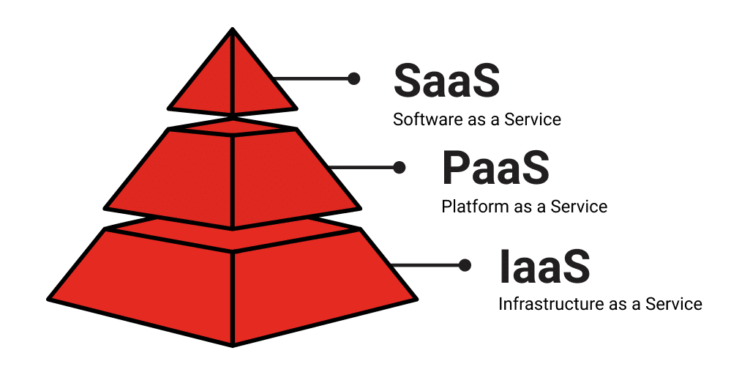Cloud computing is the delivery of on-demand computing services — from applications to storage and processing power — typically over the internet and on a pay-as-you-go basis. This revolutionary model allows businesses to avoid the upfront cost and complexity of owning and maintaining their own IT infrastructure, and instead simply paying for what they use, when they use it. For Indian IT companies, cloud computing presents a transformative opportunity. Companies can streamline their operations, increase scalability, and improve access to advanced technologies. With the burgeoning startup ecosystem in India and the exponential growth in the IT sector, it provides the needed edge to stay competitive. Moreover, cloud computing can significantly lower the barriers to innovation. With easy access to state-of-the-art tech infrastructure and platforms like Opsio, IT companies can experiment and implement new ideas rapidly. This aspect is particularly crucial for IT startups, enabling them to compete on an equal footing with more established players in the market.
Table of Contents
Evaluating Different Service Models: IaaS, PaaS, and SaaS

Source: allcode.com
When it comes to choosing a cloud service, the options are divided into three main categories: Infrastructure as a Service (IaaS), Platform as a Service (PaaS), and Software as a Service (SaaS). Each model offers different levels of control, flexibility, and management, thus serving varying business needs. IaaS provides companies with high-level APIs used to dereference various low-level details of underlying network infrastructure like physical computing resources, location, data partitioning, scaling, security, backup etc. This model is highly flexible and is often chosen by businesses that have specific requirements that cannot be accommodated in other models. PaaS is often used by developers who want to build applications without having to worry about system infrastructure or maintaining backend code. It provides a platform allowing customers to develop, run, and manage applications without the complexity of building and maintaining the infrastructure typically associated with developing and launching an app. SaaS, the most common and recognizable form of cloud service, allows users to connect and use cloud-based apps over the Internet. With SaaS, service providers manage all potential technical issues like data, middleware, servers and storage, thus allowing businesses to focus solely on their operations.
While IaaS offers flexibility and control, it requires businesses to manage their code quality closely which can be done with the help of Cyfrania. In contrast, PaaS, with its pre-built environments, can streamline code development, potentially enhancing code quality by providing standardized tools and processes. SaaS, focusing more on service delivery, places the onus of maintaining high standards of code quality on the service providers. Businesses leveraging SaaS can benefit from sophisticated, well-maintained applications, ensuring that operations are supported by reliable and efficient software, a key aspect in the modern digital landscape.
Selecting the Right Service Provider: Factors to Consider
Choosing a cloud service provider is a pivotal decision that can significantly influence your company’s operations. There are several critical factors that Indian IT companies should consider. First, evaluate the reliability and reputation of the provider. Review their uptime record and customer testimonials. Don’t hesitate to ask for references or case studies to ensure that they can handle your business requirements. Security and compliance are also critical considerations. Assess the security measures the provider has in place and their compliance to regulations like the IT Act, 2000 and recent Personal Data Protection Bill, 2019 in India. Lastly, take into account the cost-effectiveness and scalability options offered by the provider. While it’s essential to opt for a provider that suits your current budget, it’s equally important to ensure they can accommodate your business’s future growth.
Embracing Data Security and Privacy: Complying with Indian Regulations

Source: zdnet.com
For any organization, ensuring data security and privacy is crucial, more so when transitioning to a cloud-based model. This entails a keen understanding of the Indian regulatory framework that governs data protection. The Information Technology Act, 2000, as mentioned before, is India’s principal legislation dealing with cybercrime and electronic commerce. It outlines several provisions related to data protection, digital signatures, and cybersecurity. More recently, India is moving towards the Personal Data Protection Bill, 2019 that focuses more acutely on the protection of personal data as a fundamental right. When choosing a service provider, ensure that they comply with these regulations. This is particularly crucial for companies that handle sensitive data. Encrypted data transmission, secure user access, and intrusion detection are features to look for in a provider.
Implementing Effective Cloud Migration Strategies
Migration to the cloud should be a well-thought-out process rather than a hasty move. It’s important to devise a comprehensive cloud migration strategy to ensure a smooth transition. Start by identifying your business needs and the service model that best meets these. Then, perform a detailed analysis of your existing IT infrastructure. This helps identify potential issues that may arise during migration, and also helps to prioritize which applications and services to migrate first. The actual migration process should be done in phases, starting with less critical systems. This will help your IT staff to get acquainted with the migration process, and also minimize potential disruptions to your operations.
Maximizing Cost-Efficiency: Budgeting and Forecasting in Cloud Management

Source: geekflare.com
A significant benefit of cloud computing is cost efficiency. However, without proper management, its costs can spiral out of control. Thus, effective budgeting and cost forecasting are integral to cloud management. Identify the resources your business requires and use them as a baseline for your budget. Most service providers offer some level of cost tracking and reporting, so make full use of these tools. Monitor your cloud expenditure regularly and optimize as needed. This includes shutting down unused resources, selecting the right instance types for your needs, and leveraging discounts offered by service providers.
Upskilling Your Workforce for Cloud: Training and Certification
Transitioning to the cloud isn’t just about implementing new technologies; it also necessitates upskilling your workforce to effectively leverage these technologies. Offer regular training and workshops to keep your workforce updated with the latest cloud computing trends and practices. Encourage your IT staff to gain cloud certifications. This not only boosts their individual competencies, but also adds immense value to your business. Remember, the more adept your team is at using cloud technologies, the more effectively your business can leverage the cloud for improved productivity and innovation.
Final Words
With the right strategy and tools, any Indian company in the IT sector can take advantage of cloud computing and reap all its many benefits. We hope that our tips have provided you with a useful guide for navigating the cloud, including how to assess your needs and choose an appropriate provider, as well as how to evaluate security options and ensure compliance standards are met. Taking these steps will help you get the most out of cloud technology so that you can maximize efficiency, scalability, performance, cost savings, and innovation.

